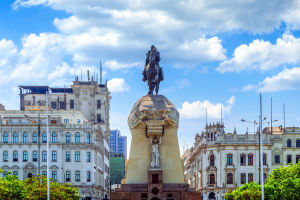Exploring Ancient Naples
Lykkers, get ready for a journey through one of the Mediterranean's most captivating cities — Naples.
Thanks to the recent publication of "Napoli Greca. Alla scoperta della Città Antica" by architect and researcher Teresa Tauro, history blends with architecture and modern technology to bring to life the origins and structure of ancient Naples.
This practical and engaging urban guide opens a window into the past, helping readers and explorers navigate the deep roots and fascinating design of the city.
The Origins of Parthenope and Neapolis
The Myth and the Beginning
The story begins in the 7th century BCE on Monte Echia, where a small trade hub named Parthenope was established by settlers from Cumae. This area, once a simple emporium, gradually expanded and formed the foundation for the city we know today.
Parthenope was named after a mythical figure associated with the sea, and its initial settlement near the island of Megaride became a key point for cultural development.
- Opening Hours for Castel dell'Ovo: 9:00–18:00 (Tuesday to Sunday, closed Monday).
- Ticket: Free entry.
- How to Get There: From Napoli Centrale, take Metro Line 1 to Municipio or Toledo station, then a 10-minute walk.
- Tip: Go early in the morning for the best photos of the bay and Vesuvius.
From Parthenope to Neapolis
By the 5th century BCE, the growing settlement evolved and shifted eastward to the area of today's Piazza Municipio. It was then known as Neapolis, meaning "New City." The transformation was more than a name change — it reflected a completely new vision in urban planning and city life.
Recommended Stop: Underground tour of Neapolis
- Opening Hours: 9:30–17:30 (daily).
- Ticket: €9 full / €7 reduced.
- Tip: Book tickets in advance online or at the entrance — they include access to the archaeological site beneath the building.
The Urban Design and Mathematical Harmony
An Innovative City Grid
Neapolis was shaped by architects, thinkers, and mathematicians who had migrated from the island of Samos. These individuals, skilled in the knowledge of Ionian science and geometry, brought with them the teachings of early thinkers like Thales and Pythagoras.
Their influence shaped the layout of Neapolis in a unique way.
A Grid of Order and Balance
The city's grid featured three main wide roads running east-west (called "plateiai"), intersected by 21 narrow streets running north-south ("stenopoi").
This structure created a checkerboard pattern designed for functionality and health, aligned with wind flow and sunlight. More than just practical, this layout followed patterns found in nature and reflected ideals of balance and symmetry — a design approach that inspired later urban concepts across Europe.
Getting Around Naples
- Main Station: Napoli Centrale.
- Metro Line 1 connects most key areas (Toledo, Dante, Museo).
- Walking is ideal in the historic center.
- City Transport Pass: €5.50/day for unlimited metro, funiculars, and buses (Unico Campania).
- Safety Tip: While central Naples is vibrant and generally safe, keep bags close and avoid very narrow alleys after dark.
Naples, A Timeless Blueprint
For Lykkers eager to explore a city where geometry meets storytelling, Napoli Greca offers both insight and adventure. With its blend of historical precision, engaging routes, and a modern multimedia approach, it brings the ancient layers of Naples to life. Whether walking its streets or flipping through its pages, this guide reveals a city shaped by ideas, harmony, and enduring beauty. Happy exploring!
-
 Sacred Lake TipsPlanning Mauritius? Here's Your Complete Guide to Visiting Sacred Lake—Including Where to Stay and Eat!
Sacred Lake TipsPlanning Mauritius? Here's Your Complete Guide to Visiting Sacred Lake—Including Where to Stay and Eat! -
 10 Lima AttractionsWhat Makes Lima So Unmissable? Here's Everything You Need To Know!
10 Lima AttractionsWhat Makes Lima So Unmissable? Here's Everything You Need To Know! -
 Santorini Scenic JourneyDiscover Santorini's iconic blue domes, cliffside hotels, and best sunset spots for an unforgettable Greek island adventure!
Santorini Scenic JourneyDiscover Santorini's iconic blue domes, cliffside hotels, and best sunset spots for an unforgettable Greek island adventure!
Copyright © zogu 2021 - 2025. All Right Reserved.